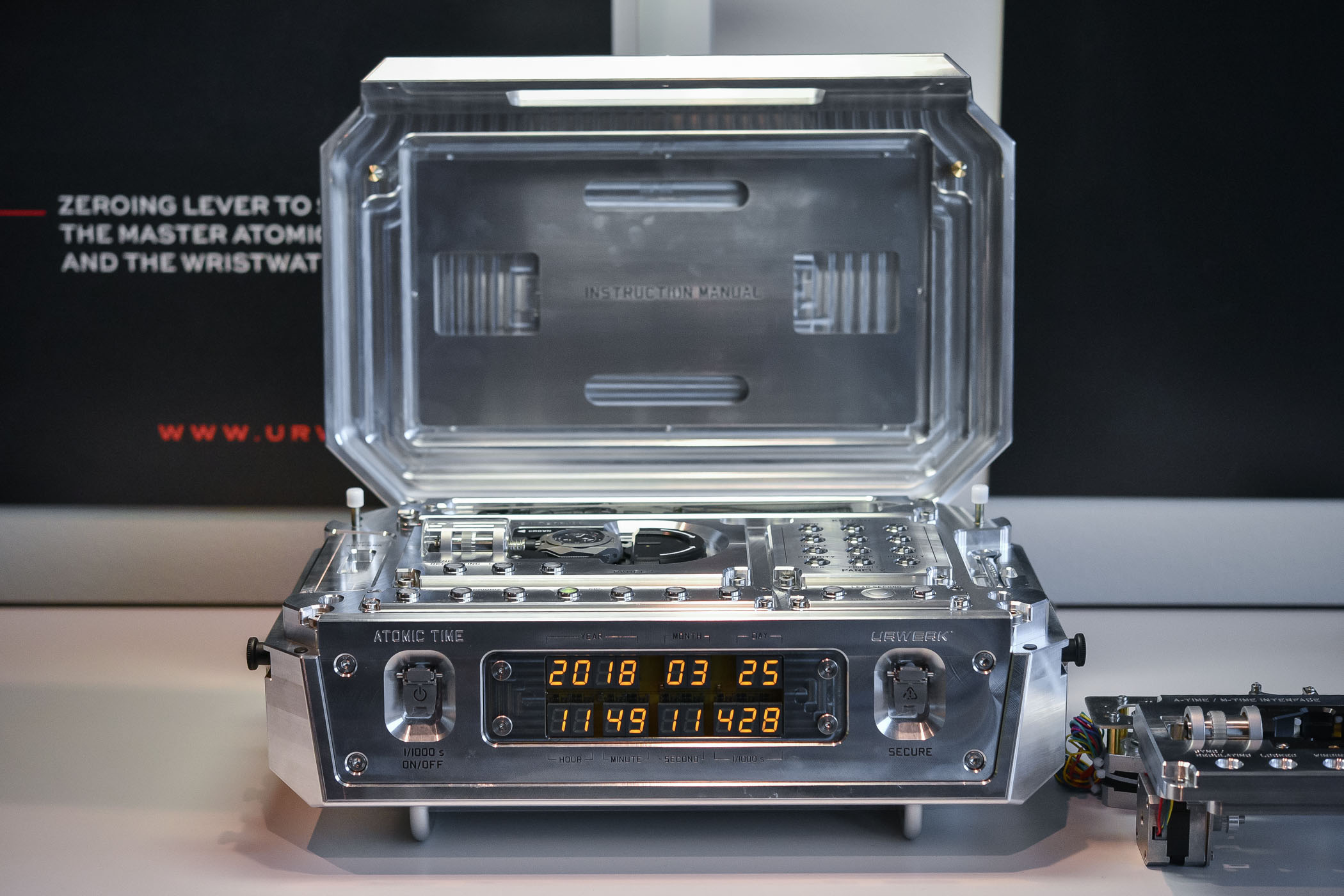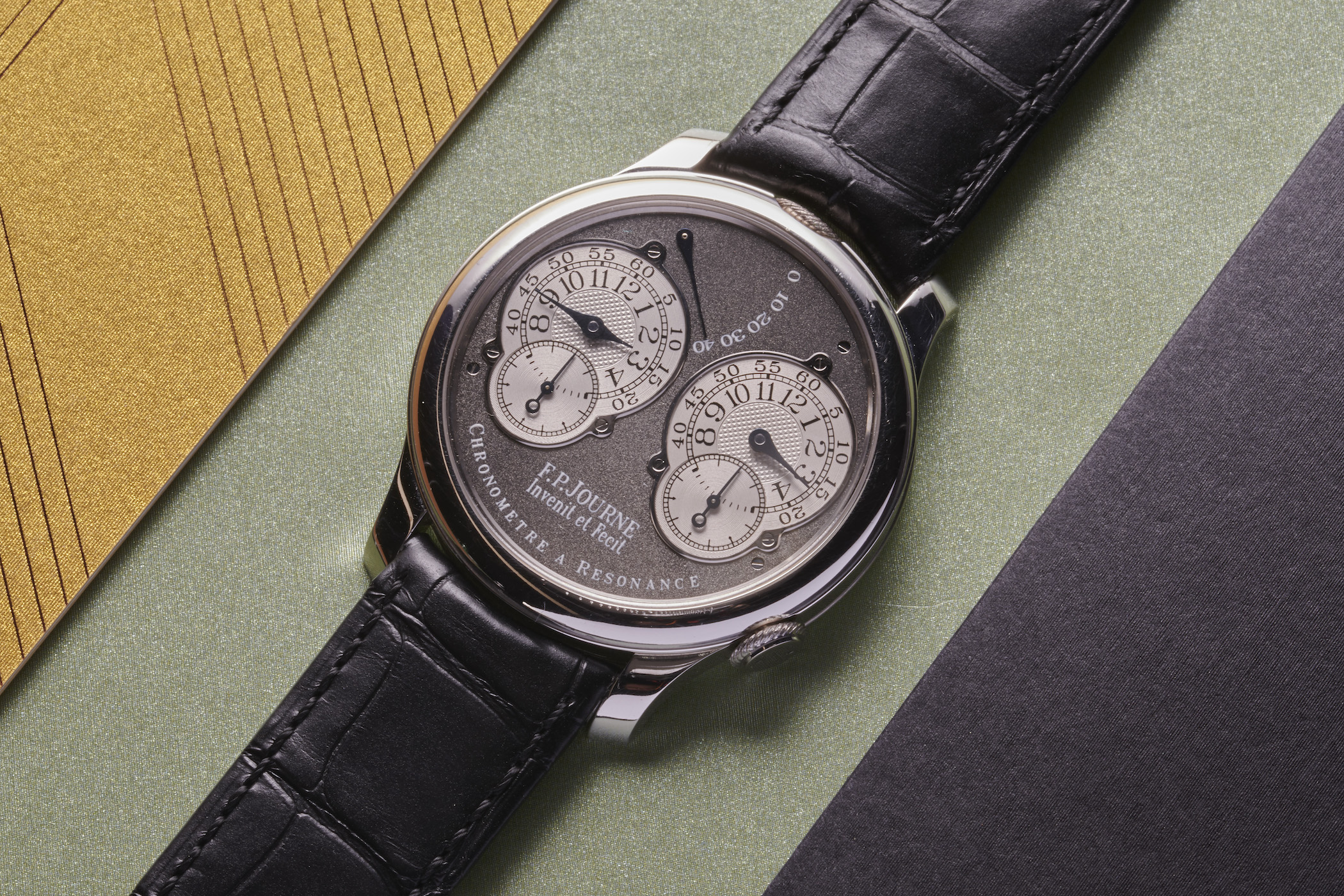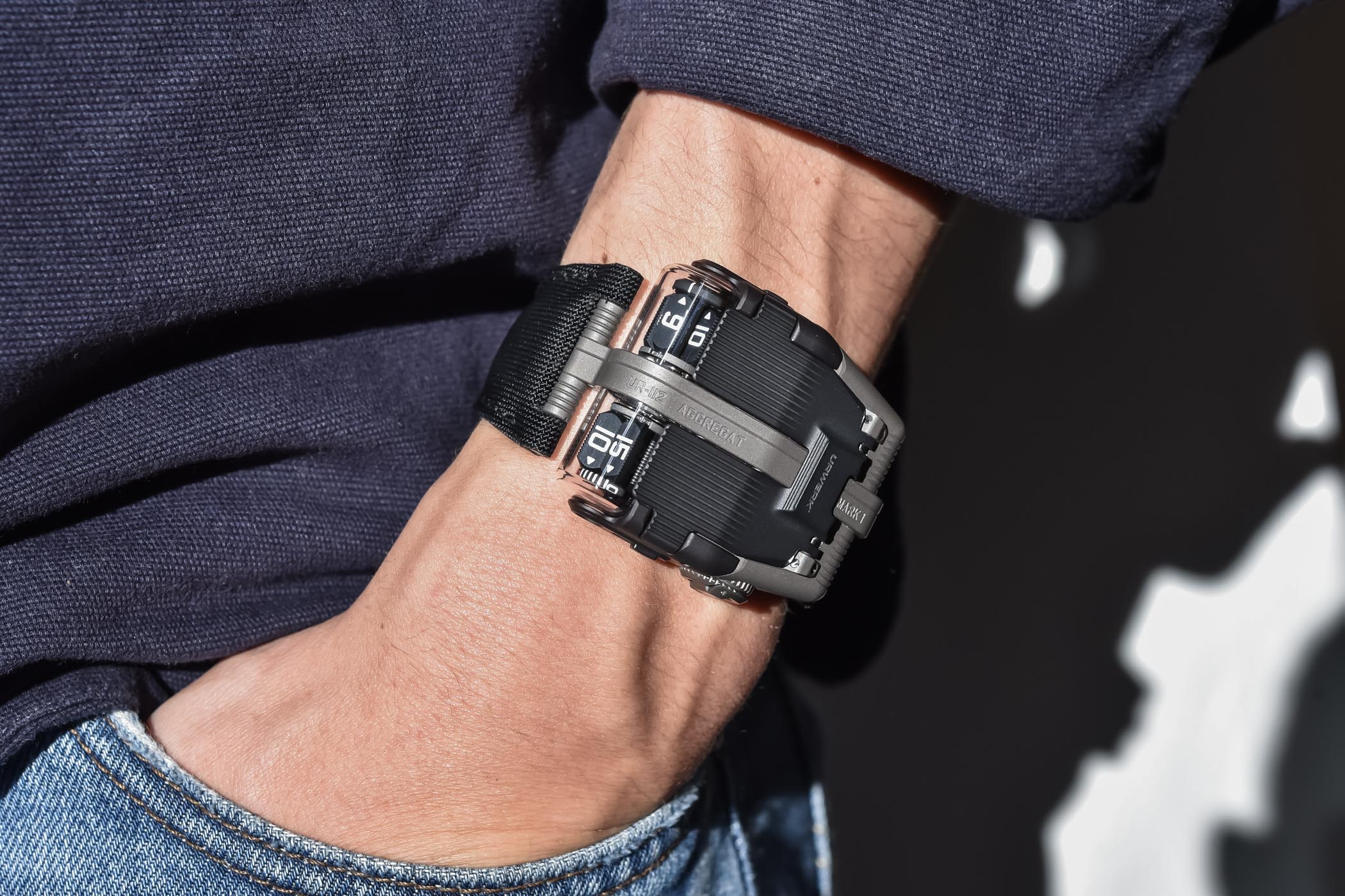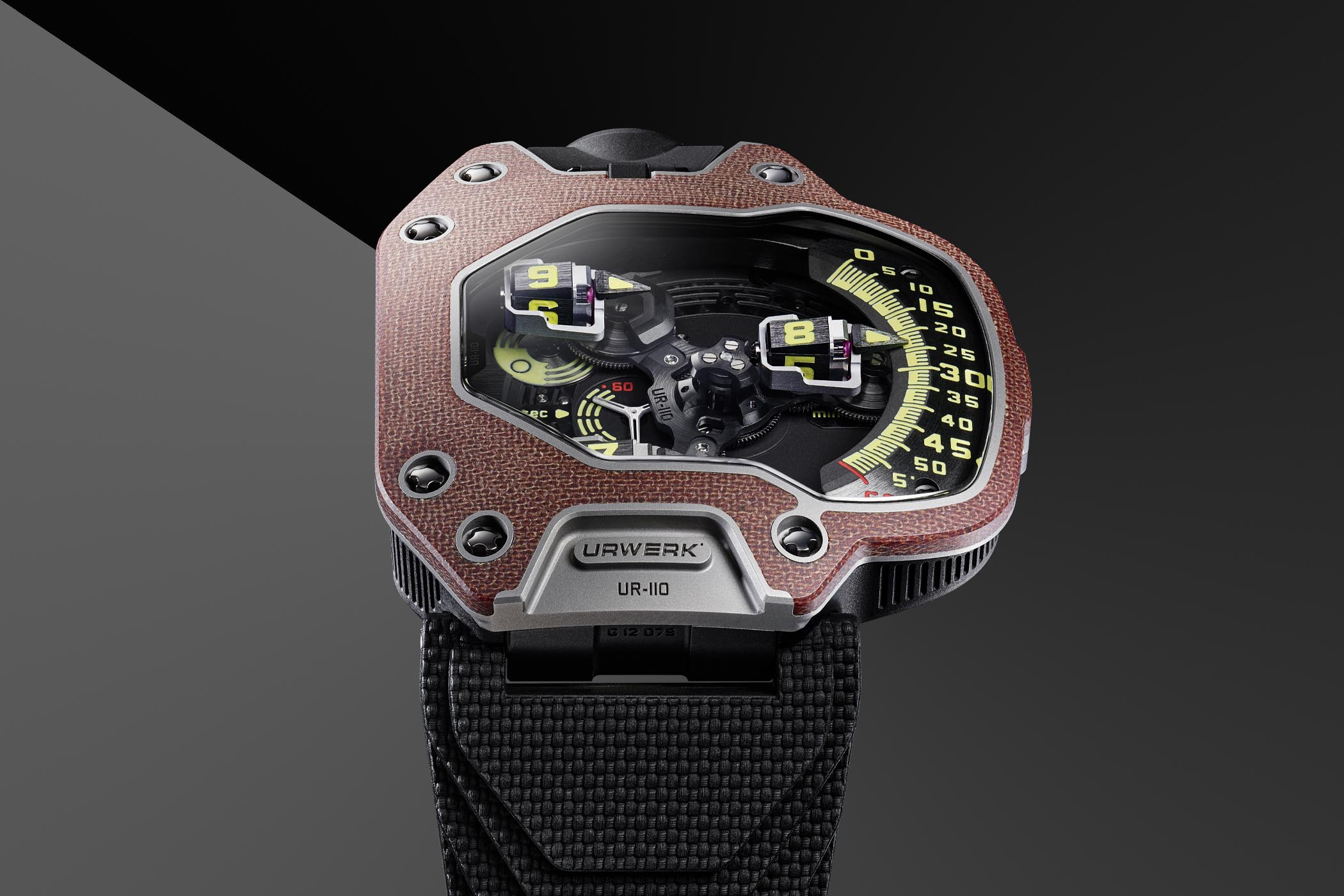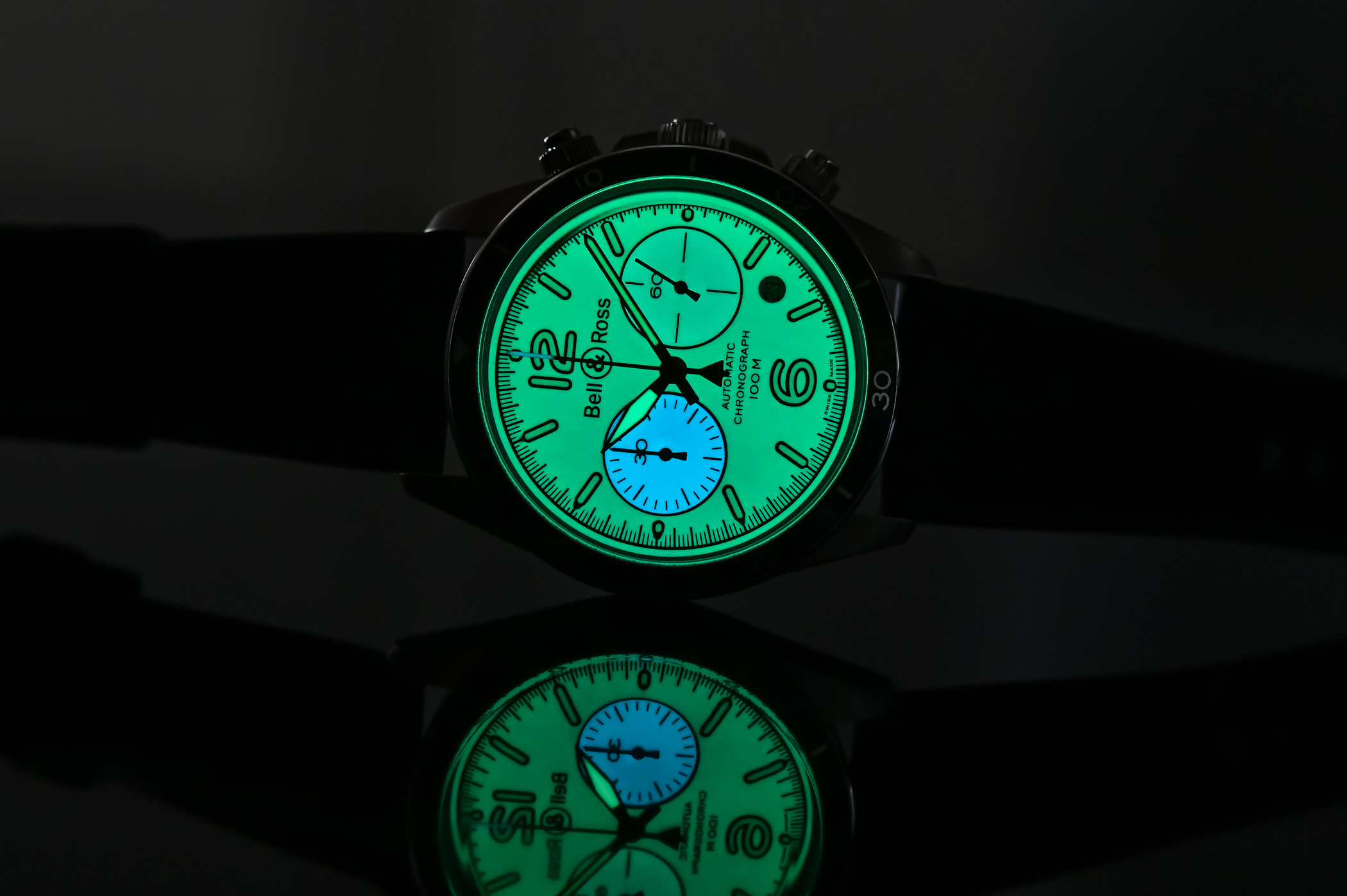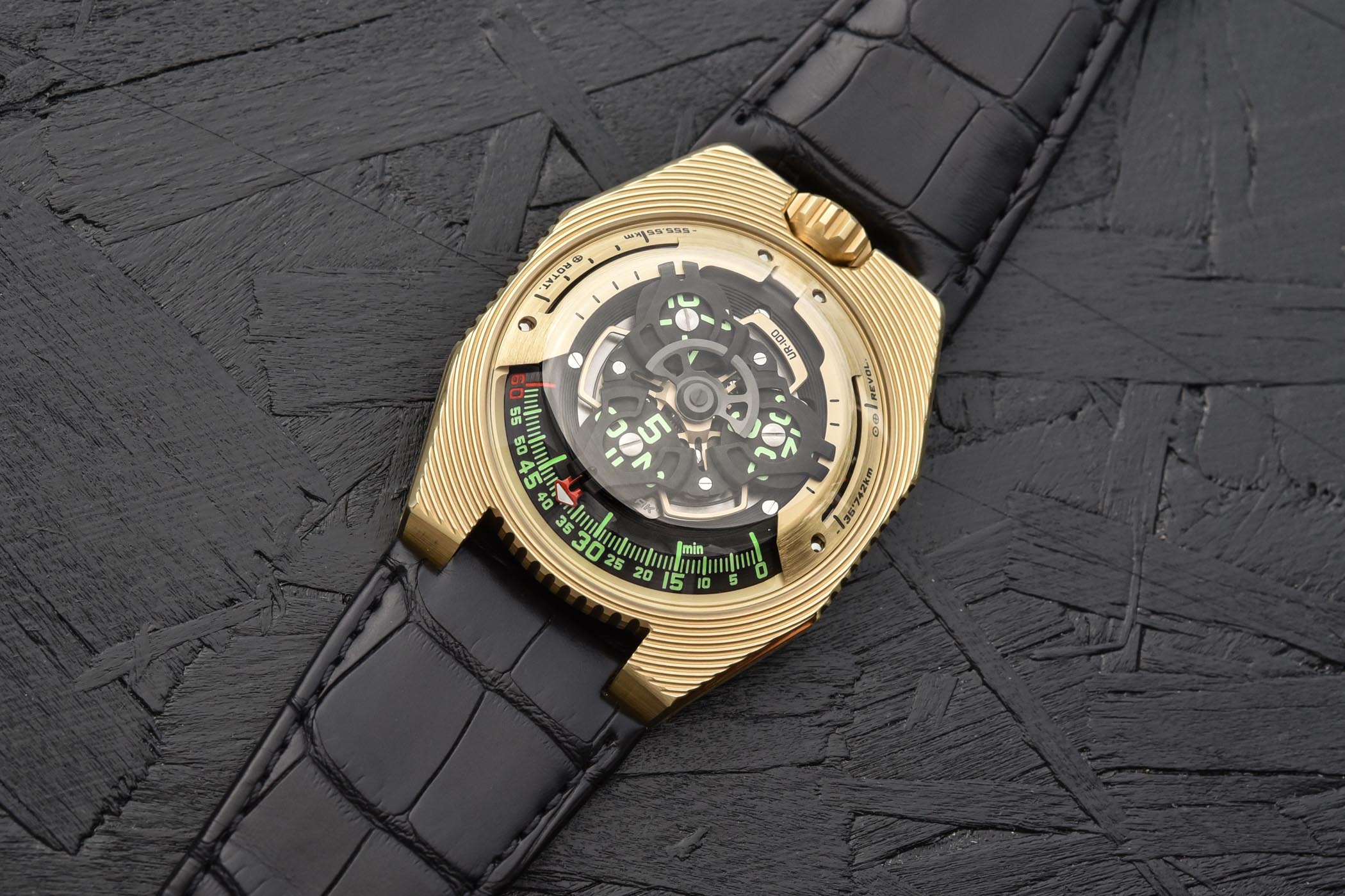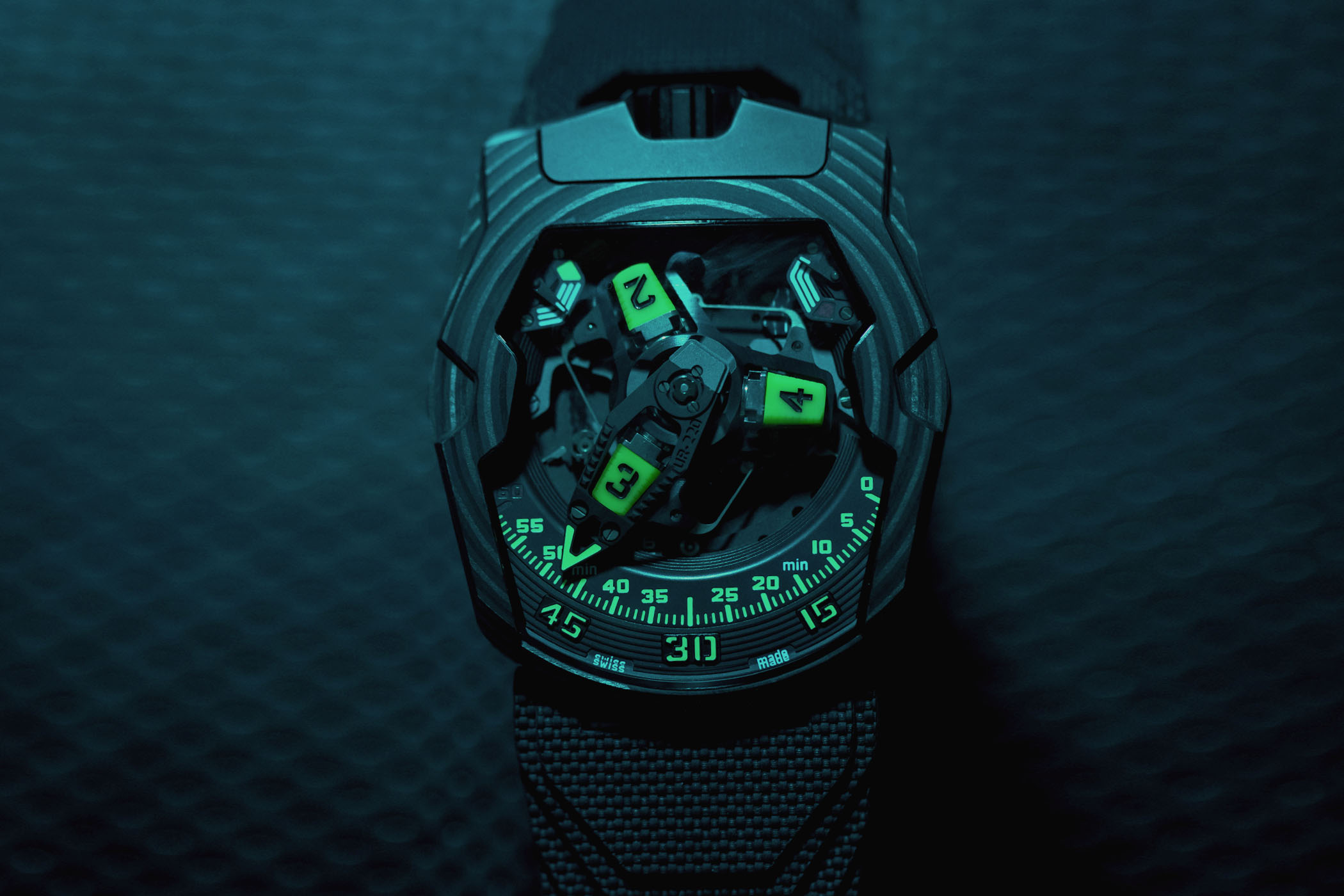URWERK
Swiss independent luxury watch manufacturer

URWERK is among the rare luxury watch brands to produce radically unique, out-of-the-box designs that don't conform to a traditional formula. Cofounders Felix Baumgartner and Martin Frei first discussed their ideas for a new piece in 1995, and officially founded the company in 1997. In the same year, they launched the UR-101 and UR-102 watches at Baselworld, Sci-Fi inspired creations with wandering hours running on a semi-circular minute track at the top. Simple by the brand's standards today, but a real head-turner over twenty years ago. In 2003, Felix and Martin fully realized their dream with the launch of the UR-103.01, a watch that would influence the brand's design for the better part of a decade. The bottom display featured wandering hours in a rectangular-ish case with a giant crown at 12 o'clock resembling a rocket engine, and a complex in-house movement operated four independent hour discs. In 2005, the UR-103.3 launched as a modified variant of the UR-103.01 with an exhibition targa crystal showcasing the orbital cross and hour discs. These limited edition watches from URWERK continued to evolve both mechanically and visually, and are today among the most sought after pieces by collectors from an independent brand.
In 2007, URWERK introduced a new type of movement/time display with the UR-201 series. A patented revolving satellite complication replaced earlier discs with telescopic minute hands that adjusted their length to follow three vectors marking the minutes. The series also used a new double turbine system that allowed user control of the automatic winding system – FREE, SPORT (reduced rotor by 35% via air pressure) and STOP. In 2009, the UR-CC1 launched with a new design sporting two horizontal indications displayed by two cylinders – one for the jumping hours and the other for retrograde minutes. This piece took over three years to develop and won Best Design Watch at the Grand Prix d’Horlogerie. The UR-110 ZrN Torpedo with its new revolving satellite complication also won Best Design Watch at the Grand Prix d’Horlogerie de Geneve in 2011.
2013 was the year of the EMC, the first luxury mechanical watch to feature “artificial intelligence.” The movement contained an optical sensor on the balance wheel that captured the precise rate of oscillation of the regulator, a 16,000,000-hertz electronic oscillator to provide an extremely precise reference rate and an artificial intelligence module to calculate the difference between the timing rate of the movement and reference oscillator. The EMC won two prizes at the Grand Prix de l’Horlogerie de Geneve in 2014. In 2017, the UR-T8 marked the 20th anniversary of the brand with the largest and the most elaborate carousel configuration to date. The case could also be flipped over to protect the watch behind a titanium shield (recalling Reverso watches). In 2018, URWERK introduced the AMC (Atomic Sympathique Clock) that referenced the Sympathique Clocks developed by Breguet. The base was an electric atomic clock (the master clock), which was able to wind, adjust and regulate a mechanical wristwatch (the slave clock) via a series of mechanical pins and triggers.
Most of the luxury watch industry operates within a predictable box of rules, often showcasing elaborate complications and extraordinary finishing, but rarely straying from the centuries-old, basic method of displaying time. URWERK never allowed itself to be constrained by industry norms, inventing highly-complex movements and creative ways to show the time with discs, carousels and satellites, all while focusing on reliability and precision. Many pieces feature a small screw/dial that allows users to fine-tune the movement for maximum accuracy, something almost always positioned behind the caseback and reserved for experienced watchmakers. The brand’s unique and novel approach to watchmaking has made it a coveted name among enthusiasts worldwide.


